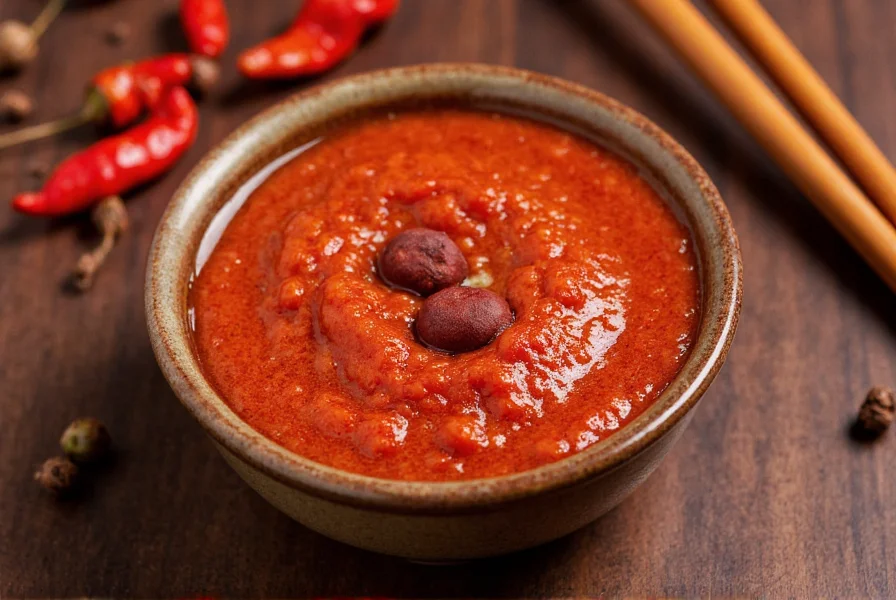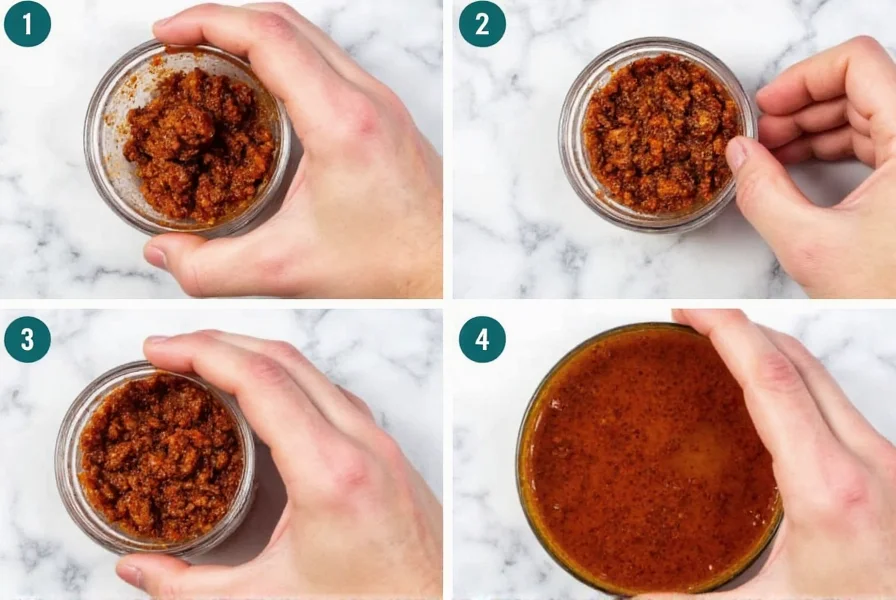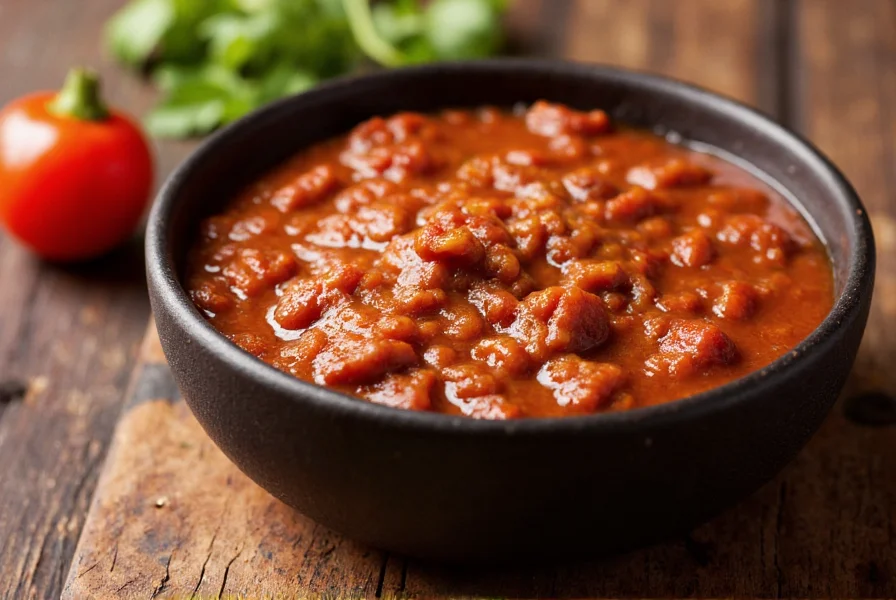Mala chili isn't just another spicy condiment—it represents a cornerstone of Sichuan culinary tradition with a complex sensory experience unlike any other chili product. Understanding this unique seasoning opens doors to authentic Chinese cooking techniques and flavor combinations that have delighted palates for centuries.
Understanding the Mala Flavor Profile
The term 'mala' (麻辣) combines two Chinese characters: 'ma' (numbing) and 'la' (spicy). This dual sensation defines the experience:
- Ma (Numbing)—Created by hydroxy-alpha-sanshool in Sichuan peppercorns, producing a distinctive tingling or vibrating sensation on the tongue
- La (Spicy)—Derived from dried red chili peppers, providing traditional heat
Unlike standard chili products that focus solely on heat intensity, authentic mala creates a multidimensional experience where the numbing sensation actually enhances perception of other flavors. This unique characteristic makes mala chili particularly valuable for creating depth in dishes where simple heat would overwhelm other ingredients.
Historical Origins and Cultural Significance
Mala seasoning originated in China's Sichuan province, where the humid climate historically encouraged consumption of warming, pungent foods. The region's distinctive geology produces Sichuan peppercorns with higher concentrations of the compounds responsible for the numbing sensation. While mala has been used for centuries in traditional Chinese medicine for its purported warming properties, it gained widespread culinary popularity through street food vendors in the 1990s.
Today, mala has evolved from regional specialty to global phenomenon, appearing in everything from traditional Chinese hot pot to innovative fusion dishes. However, authentic mala maintains specific characteristics that distinguish it from Western interpretations of 'spicy' condiments.
Mala vs Regular Chili: Key Differences
| Characteristic | Mala Chili | Regular Chili Products |
|---|---|---|
| Primary Sensation | Numbing + Spicy (dual sensation) | Primarily spicy heat |
| Key Ingredients | Sichuan peppercorns + chili peppers | Chili peppers only |
| Flavor Complexity | Citrusy, floral notes with warming sensation | Primarily heat-focused |
| Traditional Use | Hot pot, stir-fries, street food | Variety of applications |
This comparison reveals why mala chili creates a fundamentally different culinary experience. The inclusion of Sichuan peppercorns transforms simple heat into a complex sensory journey that enhances rather than overwhelms other ingredients.
Authentic Mala Composition
High-quality mala contains only natural ingredients without artificial additives. The best varieties feature:
- Sichuan peppercorns—Specifically red variety (huājiāo) from Sichuan province
- Dried chili peppers—Typically facing heaven chilies (cháotian jiāo) or similar varieties
- Optional traditional additions—Star anise, cinnamon, cloves, fennel seeds
- Oil base—Usually soybean or rapeseed oil for paste varieties
When evaluating mala chili products, check for artificial flavors, excessive salt, or preservatives. Authentic mala relies on the natural chemistry between Sichuan peppercorns and chilies to create its signature effect.
Practical Culinary Applications
Mala seasoning shines in applications where its unique properties can enhance rather than dominate:
- Hot pot base—The traditional application where mala creates a flavorful broth
- Marinades—Especially effective for proteins as the numbing sensation tenderizes
- Stir-fry seasoning—Added at the end of cooking to preserve volatile compounds
- Dipping sauces—Mixed with vinegar, garlic, and sesame oil
- Street food applications—Particularly with skewers and boiled dishes
For home cooking, start with small amounts—mala's effects build over time. The numbing sensation typically peaks 30-60 seconds after consumption, so patience is key when adjusting quantities.

Creating Homemade Mala Chili Paste
While commercial mala products are convenient, making your own ensures freshness and customization. Here's a basic authentic mala chili paste recipe:
Ingredients:
- 30g high-quality Sichuan peppercorns
- 50g dried red chilies (facing heaven variety preferred)
- 150ml neutral oil (soybean or rapeseed)
- 5g star anise
- 3g cassia bark
- 2g fennel seeds
Preparation:
- Toast Sichuan peppercorns and chilies separately in dry pan until fragrant (do not burn)
- Grind to coarse powder using mortar and pestle or spice grinder
- Heat oil with aromatic spices to 150°C (302°F)
- Remove from heat and cool slightly (to 120°C/248°F)
- Slowly pour oil over spice powder while stirring
- Cover and let steep 24 hours before use
This traditional mala preparation method preserves the volatile compounds responsible for the distinctive numbing sensation. Store in airtight container away from light for up to 3 months.

Selecting Quality Mala Products
When purchasing commercial mala chili products, consider these factors:
- Ingredient transparency—Look for products listing specific chili varieties and Sichuan peppercorn sources
- Color—Should be deep red without unnatural brightness (indicates artificial coloring)
- Aroma—Should have complex fragrance with citrus notes from peppercorns
- Texture—Authentic paste should show visible peppercorn and chili particles
- Oil separation—Natural separation is normal; avoid products with chemical-looking separation
Brands from Sichuan province generally provide the most authentic experience, though quality varies significantly even within regionally produced items. Look for products specifying 'traditional preparation' rather than 'spicy seasoning' which often indicates Westernized versions.
Storage and Shelf Life Considerations
Proper storage maintains mala's distinctive properties:
- Store in airtight container away from light and heat
- Refrigerate after opening to preserve volatile compounds
- Consume within 3-6 months for optimal flavor (commercial products)
- Homemade versions should be used within 3 months
The numbing compounds in Sichuan peppercorns degrade over time, so fresher products deliver more pronounced 'ma' sensation. If your mala loses its characteristic tingling effect, it's likely past peak freshness.
Common Misconceptions About Mala Chili
Several misunderstandings persist about this traditional seasoning:
- Misconception: Mala is just extremely spicy
Reality: Heat is secondary to the numbing sensation; authentic mala balances both elements - Misconception: All 'mala' products are authentic
Reality: Many Western products labeled 'mala' omit Sichuan peppercorns entirely - Misconception: Mala is only for hot pot
Reality: It's used in diverse applications from marinades to street food - Misconception: The numbing sensation indicates poor quality
Reality: Proper numbing is the defining characteristic of authentic mala
Understanding these distinctions helps cooks select and use mala appropriately, creating authentic experiences rather than simply adding heat.
Exploring Mala Variations
While traditional mala maintains consistent characteristics, regional and specialty variations exist:
- Dry mala—Powdered form used as seasoning or rub
- Oil-based mala—Traditional paste form for hot pot and sauces
- Clear broth mala—Lighter version using white pepper instead of chilies
- Vegetarian mala—Omits traditional animal-based broths
When exploring mala chili paste recipes or commercial products, understanding these variations helps select the appropriate type for specific culinary applications.
Conclusion
Mala chili represents far more than just another spicy condiment—it's a sophisticated flavor system with centuries of culinary tradition behind it. Understanding the balance between 'ma' and 'la' sensations unlocks authentic Chinese cooking techniques that transform simple ingredients into complex, memorable dishes. Whether using commercial products or creating your own mala blend, respecting the traditional preparation methods ensures the distinctive numbing-spicy experience that defines this unique seasoning. As global interest in authentic Sichuan cuisine continues growing, recognizing genuine mala characteristics helps cooks move beyond superficial interpretations to create truly authentic culinary experiences.











 浙公网安备
33010002000092号
浙公网安备
33010002000092号 浙B2-20120091-4
浙B2-20120091-4